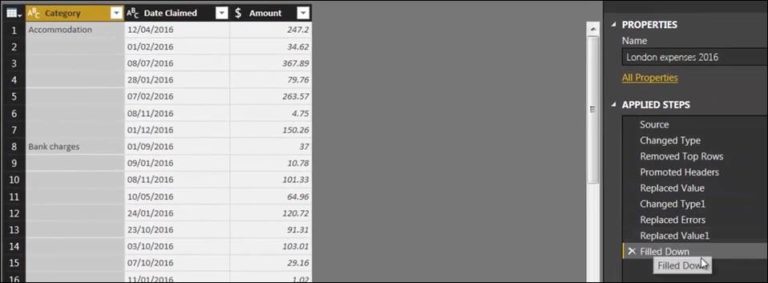Mastery Unlocked – Turbocharge Your Data Transformations with M in the Query Editor!
In today’s data-driven world, the ability to efficiently transform and manipulate data is crucial for businesses and individuals alike. Whether you’re a data analyst, a business intelligence professional, or simply someone who deals with data on a regular basis, having the right tools and techniques at your disposal can significantly enhance your productivity and effectiveness. One such tool that can supercharge your data transformations is the M language in the Query Editor.
Introduction to data transformations in the Query Editor
The Query Editor is a powerful tool within Microsoft Power Query that allows users to extract, transform, and load data from various sources. It provides a graphical interface that simplifies the process of shaping and cleaning data before loading it into a workbook or model. Data transformations performed in the Query Editor enable users to manipulate, filter, merge, and reshape data to meet their specific needs.
The power of M language for data transformations
While the Query Editor provides a rich set of capabilities for data transformations, it also offers an advanced scripting language called M. M language empowers users to go beyond the limitations of the graphical interface and unleash the full potential of their data transformations. With M language, users have fine-grained control over every step of the data transformation process, enabling them to perform complex operations and achieve unprecedented flexibility.
Getting started with M language
To start leveraging the power of M language, it’s essential to have a basic understanding of its syntax and structure. M language is a functional language that utilizes variables, expressions, functions, and operators to define and manipulate data. By learning the fundamentals of M language, users can unlock the ability to perform advanced data transformations with ease.
Understanding variables and expressions in M language
In M language, variables are used to store and manipulate values. They provide a way to reference and reuse data throughout the transformation process. Expressions, on the other hand, are the building blocks of M language and define operations or computations to be performed on data. By understanding how to declare and use variables, as well as construct expressions, users can create powerful data transformations.
Using functions and operators in M language
Functions and operators play a crucial role in M language by providing predefined operations and computations. M language offers a vast library of built-in functions and operators that users can leverage to perform common data transformations. By familiarizing themselves with these functions and operators, users can streamline their transformations and reduce the need for repetitive code.
Advanced data transformation techniques in M language
M language provides several advanced techniques for data transformation that go beyond simple filtering and reshaping. These techniques include grouping and aggregating data, pivoting and unpivoting tables, merging and appending queries, and handling hierarchical data structures. By mastering these advanced techniques, users can tackle complex data manipulation scenarios efficiently.
Turbocharging data transformations with M language
One of the key advantages of M language is its ability to handle large datasets and perform operations at high speeds. By optimizing data transformations using M language, users can experience significant performance improvements in their data transformation processes. M language offers various optimization techniques, such as using native M functions, minimizing data movement, and reducing unnecessary steps. By applying these optimization strategies, users can turbocharge their data transformations and achieve faster and more efficient results.
Leveraging M language for complex data manipulations
Complex data manipulation scenarios often require intricate logic and calculations. M language provides the flexibility and power to handle such complexities. Users can utilize conditional statements, iterative loops, and custom functions to perform complex calculations, data validations, and transformations. By leveraging the capabilities of M language, users can overcome data manipulation challenges that go beyond the capabilities of the graphical interface.
Enhancing performance with M language optimizations
In addition to the optimization techniques mentioned earlier, M language offers several features and strategies to enhance performance. These include lazy evaluation, query folding, and parallel processing. Lazy evaluation allows the Query Editor to defer computations until necessary, improving efficiency. Query folding enables pushing certain operations back to the data source, reducing data transfer. Parallel processing utilizes multiple CPU cores to accelerate data transformations. By utilizing these performance-enhancing features, users can achieve significant speed improvements in their data transformation workflows.
Integrating M language with other Power Query features
While M language is a powerful tool on its own, it seamlessly integrates with other features of Power Query, further expanding its capabilities. Users can combine M language with the Query Editor’s graphical interface, leveraging the strengths of both approaches. They can create custom functions in M language and use them within the Query Editor’s formula bar. Additionally, M language supports data source connectors, allowing users to extend their data transformation capabilities beyond the built-in connectors. By integrating M language with other Power Query features, users can create dynamic and efficient data transformation workflows.
Best practices for using M language in the Query Editor
To maximize the benefits of M language and ensure maintainable and scalable data transformations, it’s essential to follow best practices. Some key practices include using descriptive variable and function names, organizing code into modular and reusable components, documenting transformations, and implementing error handling. By adhering to these best practices, users can create clean, readable, and robust M language code that is easy to understand and maintain.
Common challenges and how to overcome them
Like any powerful tool, using M language for data transformations can present certain challenges. Some common challenges include handling complex data structures, troubleshooting errors, and optimizing performance. However, by understanding the nuances of M language, utilizing the available resources such as community forums and documentation, and continuously learning and experimenting, users can overcome these challenges and become proficient in leveraging M language for their data transformation needs.
Real-world examples of data transformations using M language
To provide a practical perspective, let’s explore a few real-world examples of data transformations using M language.
Example 1: Cleaning and standardizing data
Suppose you have a dataset containing customer names with inconsistent formatting. Using M language, you can create a transformation that applies consistent capitalization, removes leading and trailing spaces, and standardizes the format of names across the dataset. This ensures clean and consistent data for further analysis and reporting.
Example 2: Calculating derived metrics
Imagine you have a sales dataset with transactional data, and you want to calculate the total revenue and average order value. With M language, you can define expressions and variables to perform the necessary calculations. By leveraging the power of M language, you can efficiently derive meaningful metrics from your raw data.
Example 3: Combining and merging datasets
Suppose you have multiple datasets from different sources that need to be combined into a single dataset for analysis. Using M language, you can merge, append, or join the datasets based on common keys or criteria. This allows you to consolidate your data and create a unified view for analysis purposes.
These real-world examples demonstrate the versatility and power of M language in addressing various data transformation requirements. By utilizing M language’s capabilities, users can overcome data inconsistencies, perform complex calculations, and integrate disparate datasets seamlessly.
Tips for improving productivity and efficiency
To maximize productivity and efficiency when working with M language in the Query Editor, consider the following tips:
Plan and design: Before diving into the code, take the time to plan and design your data transformation process. Understand the requirements, identify the necessary steps, and visualize the desired outcome. This helps in structuring your M language code effectively.
Reuse code: Identify common patterns and reusable transformations in your data transformation workflows. Create custom functions or reusable code snippets to avoid duplication and simplify your codebase. This saves time and improves maintainability.
Document your code: Documenting your M language code is crucial for understanding and maintaining the transformations over time. Use comments to explain the purpose of complex transformations, provide context, and make the code more readable for yourself and others.
Explore and experiment: M language offers a vast array of functions, operators, and techniques. Take the time to explore the available options and experiment with different approaches. This helps in discovering new functionalities and optimizing your data transformations.
Leverage community resources: The Power Query community is vibrant and active. Engage with the community through forums, blogs, and social media groups to learn from others, seek help, and stay updated on the latest trends and techniques in M language.
By following these tips, you can enhance your productivity, improve the quality of your M language code, and achieve more efficient data transformations in the Query Editor.
Conclusion
M language is a game-changer when it comes to data transformations in the Query Editor. Its flexibility, power, and optimization capabilities allow users to turbocharge their data manipulation workflows. By understanding the syntax, utilizing variables, expressions, functions, and operators effectively, and following best practices, users can unlock the full potential of M language and take their data transformations to the next level.
With M language, users can overcome complex data manipulation challenges, enhance performance, and integrate seamlessly with other Power Query features. The real-world examples highlight its practical applications across different scenarios. By embracing M language and leveraging its capabilities, users can unlock mastery in data transformations and achieve remarkable results.
FAQs (Frequently Asked Questions)
Can I use M language with any data source?
Yes, M language is compatible with various data sources, including databases, Excel files, CSV files, web services, and more. It allows you to transform and shape data from a wide range of sources.
Is M language difficult to learn for beginners?
M language can have a learning curve, especially for beginners. However, with practice, patience, and the availability of online resources and community support, users can grasp the fundamentals and gradually become proficient in M language.
Can I automate data transformations using M language?
Yes, M language supports automation through the creation of custom functions and the ability to script data transformation workflows. You can schedule data refreshes and automate the entire process using tools like Power Automate or other scheduling mechanisms.
Is M language only applicable to Microsoft Power Query?
M language is primarily associated with Microsoft Power Query, but its concepts and syntax can be found in other data transformation tools as well. Understanding M language can be beneficial when working with Power BI, Power Automate, and other similar platforms.
Where can I find additional resources to learn M language?
You can find a wealth of resources online, including official documentation, tutorials, forums, and communities dedicated to Power Query and M language. Some recommended resources include the Microsoft Power Query documentation, online courses and tutorials, blog posts, and community forums like the Power BI Community and Stack Overflow.















